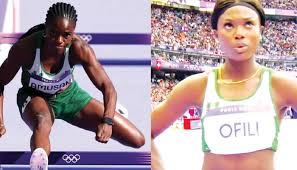Skip to content
Niagara Falls International Marathon (Canada) when winners were disqualified after being mis-led down the wrong course.
What happened
During the 2025 edition of the event (which includes the half-marathon and 10 km races), the top three finishers in both the 10K and the half-marathon unknowingly followed the lead cyclist the wrong way. (Canadian Running Magazine)
Specifically:
-
About 2 km into the race, while the 10K and half-marathon fields were still running together, the lead cyclist turned at a point roughly 500 m earlier than the correct turnaround.
-
The mis-turn effectively cut approximately 1.1 km off the half-marathon course and about 1.25 km off the 10K. (Canadian Running Magazine)
-
One of the early 10K winners, Matt King, said he asked the lead cyclist twice if he was sure it was the right way, and was told yes.
-
“He said he’d tell me if it wasn’t.” (Canadian Running Magazine)
-
After finishing, King noticed the time gap to 4th place was so large (10 minutes ahead) that something must have been wrong.
-
He then discovered he and the two others ahead of him had been disqualified. (Canadian Running Magazine)
-
In the half marathon, one runner (originally 5th) later moved up to 2nd due to the disqualifications and described the course as “an absolute nightmare”: volunteers were in wrong places, bike marshal led the wrong way, etc. (Canadian Running Magazine)
The official response
-
The race organisers removed the names of the runners who followed the wrong course from the official results—on the official race app their names appeared with “no finish time”. (Canadian Running Magazine)
-
The race director, Dave Mucyk, issued an apology acknowledging the lead cyclist made an honest mistake and panicked when the coned-lane ended.
-
He said the volunteer had supported the event for many years and “feels terrible” about what happened. (Canadian Running Magazine)
-
The affected runners were offered a refund of their entry fee and free entry into next year’s race. (Canadian Running Magazine)
Why it matters
-
This is a major issue because leading competitors off course undermines the fairness of the competition.
-
These are the athletes who expect full integrity of the course layout, distances and race management.
-
The runners followed what they reasonably believed to be correct (the lead cyclist) yet ended up running a shorter distance.
-
That means their times and finishing positions cannot legitimately stand.
-
It places responsibility on multiple parties: organisers, course marshals, signage, lead vehicle/cyclist support, and the runners themselves.
-
But here the primary fault clearly lay with the organisers and marshal support.
-
For prize winners and top-finishers, things like sponsorship, recognition and career impact may be affected if they are wrongly disqualified or if the race result is invalid.
Key takeaways & lessons
-
Race organisers must ensure course clarity:
-
This includes proper signage, marshals in place, leads/co-guides who know the route, and contingency for where coned/marked lanes end. In this case the lead cyclist apparently panicked when the coned lane ended. (Canadian Running Magazine)
-
Runners should familiarise themselves with the course: While much responsibility lies with the organisers, competitive runners (especially elites) are often advised to know the course map ahead of time, attend briefings, and not rely solely on a lead cyclist or vehicle. (See general commentary on wrong-course liabilities). (Runner’s World)
-
Event liability and player compensation: When organisers are at fault, they may offer alternatives (free entry next year, refunds) but the damage may extend beyond that (lost sponsorship, lost ranking, lost prize money, etc.).
-
In this case the organisers offered refund + next year’s free entry.
-
Communication matters: Once the mistake was discovered, the apology and subsequent offer is important—but many will still feel aggrieved (time/money/travel/missed opportunity).
-
One affected runner said: “It’s a huge disappointment … the time and money spent to travel to races like these and then to perform well and have such a big error occur is such a disappointment.” (Canadian Running Magazine)
The 2025 Niagara Falls International Marathon weekend took a turn from being “scenic and competitive” to what participants described as “an absolute nightmare.”
The fact that the lead runner groups in both the 10K and half-marathon followed a mis-directed lead cyclist and then were disqualified is a cautionary tale for race administration everywhere.
While the organisers admitted fault and made offers to affected runners, for many of the front-runners their moment of victory was stripped away through no fault of their own.
The incident underscores how even small errors in route guidance can have outsized consequences in major races.


